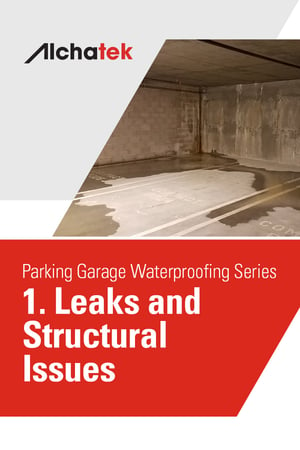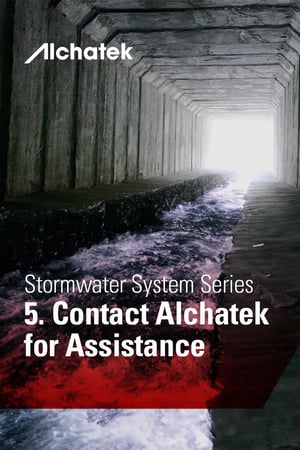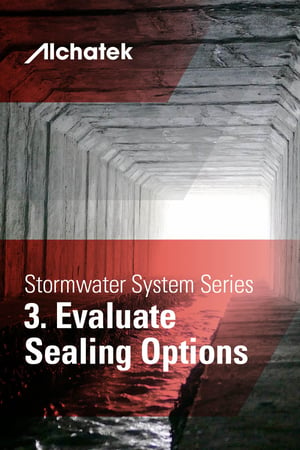
 Below-grade parking garages serve as essential components of urban infrastructure. They offer convenient parking solutions, especially in densely populated areas where surface parking is limited. However, these subterranean structures are particularly susceptible to water leaks, which can severely compromise their structural integrity. A compromised structure not only poses safety risks but also leads to costly repairs and decreased property value.
Below-grade parking garages serve as essential components of urban infrastructure. They offer convenient parking solutions, especially in densely populated areas where surface parking is limited. However, these subterranean structures are particularly susceptible to water leaks, which can severely compromise their structural integrity. A compromised structure not only poses safety risks but also leads to costly repairs and decreased property value.
The Detrimental Effects of Water on Concrete
Water leaks in below-grade parking garages are more than just a nuisance; they can be a ticking time bomb for the structure's integrity. Concrete, the primary material used in these garages, is porous by nature. When water seeps into the concrete, it can lead to a variety of problems. One of the most immediate concerns is the weakening of the concrete itself. Water can dissolve the soluble components of concrete, leading to a loss of mass and strength over time.
Moreover, water infiltration can lead to the corrosion of the steel reinforcement bars (rebar) embedded within the concrete. Corroded rebar loses its tensile strength, making the concrete more susceptible to cracking and spalling. In extreme cases, the combination of weakened concrete and corroded rebar can lead to structural failure, posing significant safety risks to both vehicles and pedestrians.
Recognizing the Signs of Structural Compromise
Early detection of water leaks and their effects is crucial for maintaining the structural integrity of a below-grade parking garage. Managers and owners should be vigilant in looking for signs of compromise, which can manifest in various ways:
- Cracking: Hairline cracks may appear on the surface of the concrete. While some cracking is normal due to the concrete's natural curing process, excessive or widening cracks can indicate a serious issue.
- Spalling: This refers to the chipping or flaking off of the concrete surface. Spalling is often a sign that the concrete has been weakened, either due to water infiltration or freeze-thaw cycles.
- Efflorescence: A white, powdery substance may form on the surface of the concrete. This is a sign that water is moving through the concrete, dissolving its soluble components, and depositing them on the surface.
- Rust Stains: These indicate that the rebar within the concrete is corroding. Rust stains usually appear as orange or brown streaks on the concrete surface.
Taking Immediate and Long-Term Actions
Addressing water leaks and their structural implications requires both immediate and long-term strategies. Here are some actionable steps:
- Immediate Actions:
- Seal Leaks: Hire an expert to seal leaks with polyurethane grout. This material is effective in stopping water infiltration and can even be applied to damp surfaces.
- Install Drainage: If water ponding is a problem, consider installing additional drains to remove standing water.
- Long-Term Actions:
- Regular Inspections: Schedule regular structural assessments to identify any new or worsening signs of water damage.
- Maintenance Plan: Develop a comprehensive maintenance plan that includes routine cleaning of drains and regular re-application of waterproofing materials.
Protecting Your Investment and Public Safety
The structural integrity of a below-grade parking garage is not just a matter of maintaining a physical asset; it's also about ensuring the safety of the people who use the facility. By understanding the detrimental effects of water on concrete and taking proactive steps to address them, stakeholders can protect both their investment and public safety. Ignoring the issue or delaying action can result in costly repairs, decreased property value, and, most importantly, compromised safety conditions.
By taking a proactive approach to water leaks, responsible parties can extend the lifespan of their below-grade parking garages, reduce maintenance costs, and ensure a safe and functional environment for users. The key is to act early, monitor regularly, and employ effective solutions tailored to the unique challenges of subterranean structures.




 As specialists in waterproofing solutions, the Alchatek support team understands the unique needs facing public aquariums. Leaky exhibits and tanks can disrupt the visitor experience and require timely repair. Alchatek is here to help aquariums tackle these challenges.
As specialists in waterproofing solutions, the Alchatek support team understands the unique needs facing public aquariums. Leaky exhibits and tanks can disrupt the visitor experience and require timely repair. Alchatek is here to help aquariums tackle these challenges.
 Public aquariums, with their mesmerizing exhibits and diverse marine life, are remarkable institutions that captivate visitors worldwide. However, behind the scenes, ensuring the longevity of the seals created by polyurethane grouts is a crucial aspect of maintaining these aquatic wonders. In this segment of our series on enhancing aquarium sustainability with polyurethane grouts, we explore the critical factor of seal longevity and its profound impact on maintenance schedules.
Public aquariums, with their mesmerizing exhibits and diverse marine life, are remarkable institutions that captivate visitors worldwide. However, behind the scenes, ensuring the longevity of the seals created by polyurethane grouts is a crucial aspect of maintaining these aquatic wonders. In this segment of our series on enhancing aquarium sustainability with polyurethane grouts, we explore the critical factor of seal longevity and its profound impact on maintenance schedules.
 Public aquariums are a testament to human ingenuity, recreating breathtaking underwater ecosystems for visitors to explore. The diverse materials used in public aquarium exhibits require careful consideration. Polyurethane grouts are often utilized to seal water leaks when repairs are needed. Compatibility between polyurethane grouts and exhibit materials is critical for preserving the visual splendor of these underwater wonders.
Public aquariums are a testament to human ingenuity, recreating breathtaking underwater ecosystems for visitors to explore. The diverse materials used in public aquarium exhibits require careful consideration. Polyurethane grouts are often utilized to seal water leaks when repairs are needed. Compatibility between polyurethane grouts and exhibit materials is critical for preserving the visual splendor of these underwater wonders.
 Public aquariums, as guardians of marine life, prioritize the safety and well-being of their aquatic residents. When it comes to leak seal solutions, the advantages of
Public aquariums, as guardians of marine life, prioritize the safety and well-being of their aquatic residents. When it comes to leak seal solutions, the advantages of 
 Public aquariums immerse visitors in the underwater world, connecting them with marine life. Clear water, visually appealing exhibits, and unobstructed views of aquatic species are central to this experience. Maintaining a leak-free exhibit is vital for preserving water quality and showcasing habitats.
Public aquariums immerse visitors in the underwater world, connecting them with marine life. Clear water, visually appealing exhibits, and unobstructed views of aquatic species are central to this experience. Maintaining a leak-free exhibit is vital for preserving water quality and showcasing habitats.
 Managing stormwater infrastructure comes with unique challenges. At Alchatek, we want to help. Our team has extensive knowledge of innovative solutions for stormwater system repair and waterproofing.
Managing stormwater infrastructure comes with unique challenges. At Alchatek, we want to help. Our team has extensive knowledge of innovative solutions for stormwater system repair and waterproofing.
 Managing a diverse array of stormwater system components can be a daunting task. Maintenance managers must juggle curb inlets, drop inlets, manholes, and culverts, each with its unique set of issues and repair needs. Toss in a wide geographic coverage area, and the complexity escalates. Faced with limited resources and pressing timelines, how should a maintenance team prioritize which repairs to tackle first?
Managing a diverse array of stormwater system components can be a daunting task. Maintenance managers must juggle curb inlets, drop inlets, manholes, and culverts, each with its unique set of issues and repair needs. Toss in a wide geographic coverage area, and the complexity escalates. Faced with limited resources and pressing timelines, how should a maintenance team prioritize which repairs to tackle first?
 When it comes to sealing leaks in stormwater systems, one size does not fit all. Whether dealing with curb inlets, drop inlets, manholes, or culverts, the choice of sealing material plays a pivotal role in the success and longevity of the repair. Cementitious grouts and polyurethane grouts represent the main contenders in the field. Knowing when and where to use each is crucial for a sustainable solution.
When it comes to sealing leaks in stormwater systems, one size does not fit all. Whether dealing with curb inlets, drop inlets, manholes, or culverts, the choice of sealing material plays a pivotal role in the success and longevity of the repair. Cementitious grouts and polyurethane grouts represent the main contenders in the field. Knowing when and where to use each is crucial for a sustainable solution.
 Leaks in stormwater systems can be elusive, often manifesting their symptoms far from the actual point of origin. This is especially true for interconnected systems like manholes or box culverts, where water can travel significant distances before showing visible signs of a leak. Accurate identification of the leak source is crucial for any effective repair operation. Failure to correctly locate the leak can result in wasted time, resources, and ultimately, unsuccessful repair.
Leaks in stormwater systems can be elusive, often manifesting their symptoms far from the actual point of origin. This is especially true for interconnected systems like manholes or box culverts, where water can travel significant distances before showing visible signs of a leak. Accurate identification of the leak source is crucial for any effective repair operation. Failure to correctly locate the leak can result in wasted time, resources, and ultimately, unsuccessful repair.